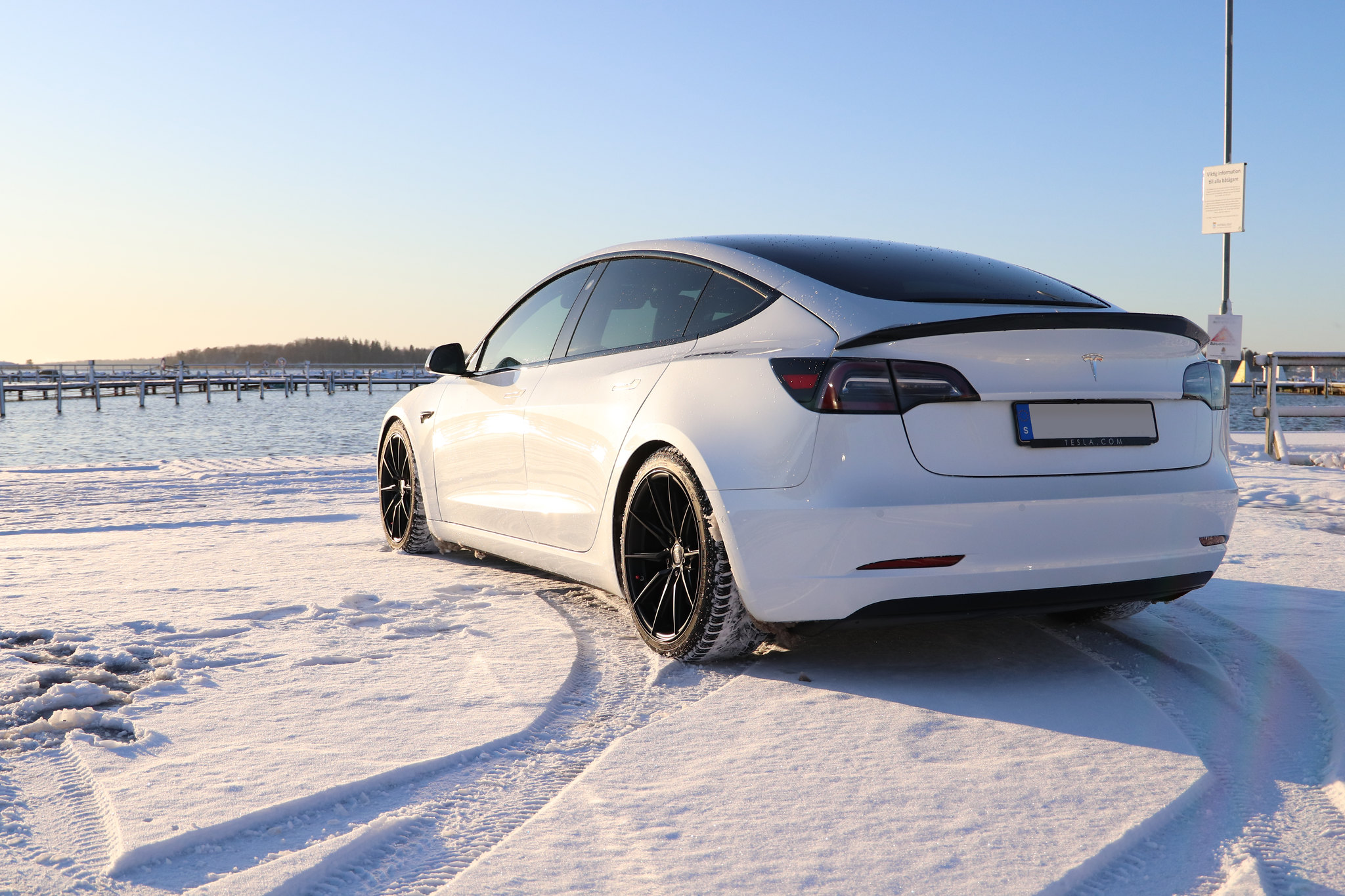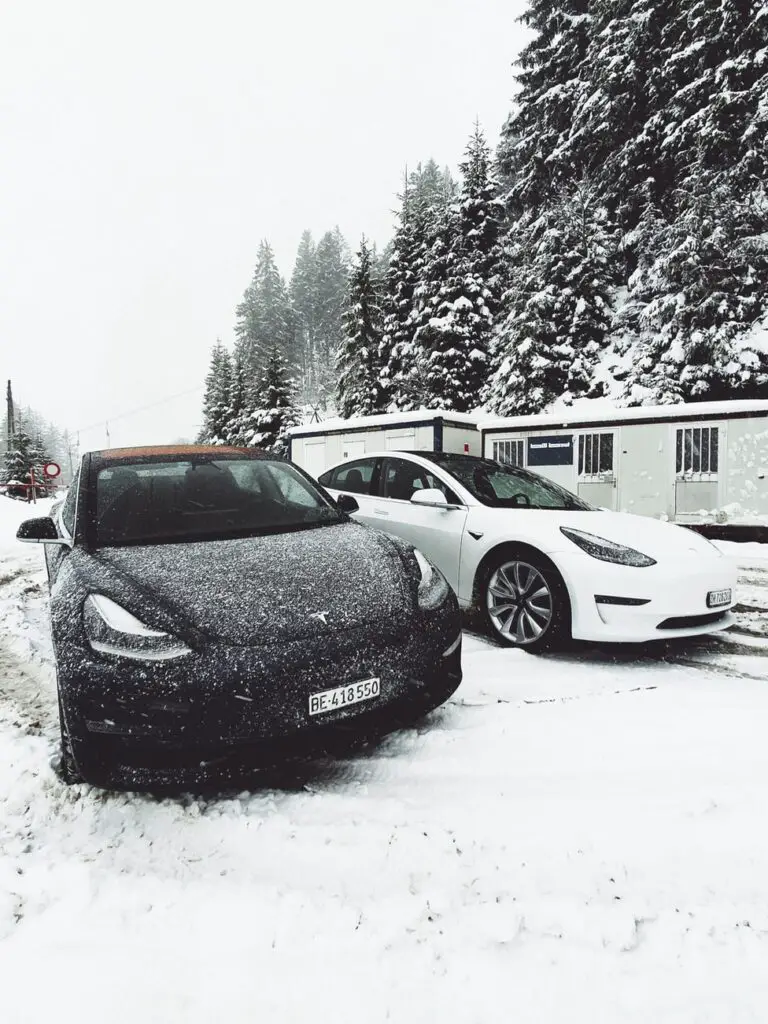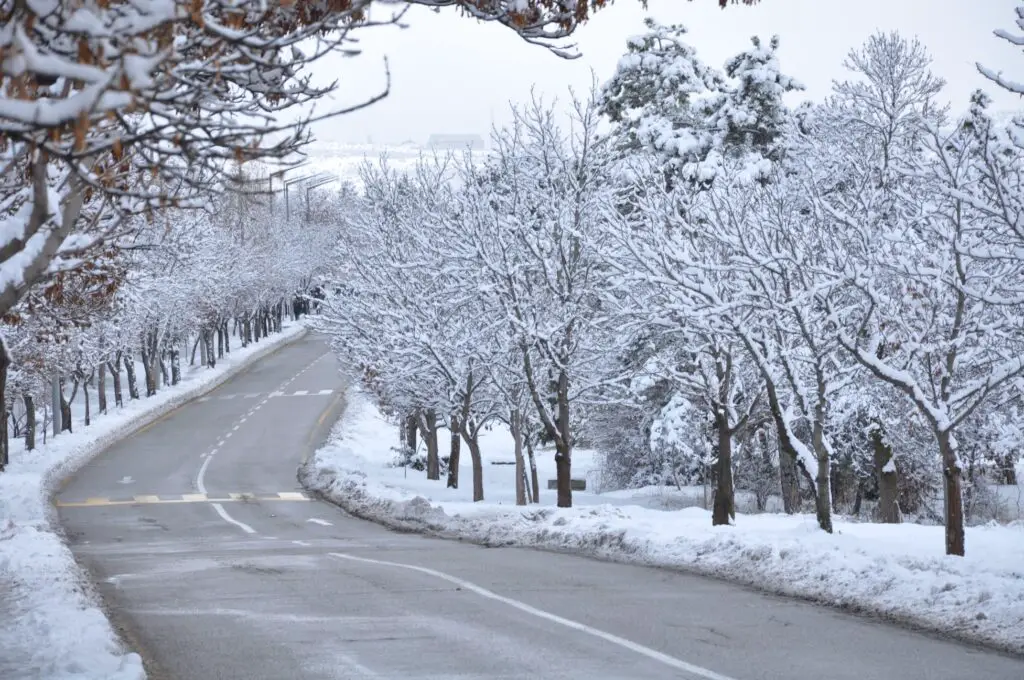
Rechargd.com is reader supported. We may collect a share of sales or other compensation from the links on this page. As an Amazon Associate, we earn from qualifying purchases.
“We’re going skiing later in the year, and thinking of taking our Tesla Model X, because not only will we have plenty of room for all our kits, it’s also going to be much more comfortable. But, I’m a bit worried about how the car will perform when it comes to winter, snow, and ice driving”?
It’s no secret that electric vehicles lose range in cold weather.
There’s a considerable amount of talk, and speculation suggesting electric vehicles don’t perform well in the winter, but that’s just not true, especially with the Tesla’s model range, including the Model X, which ‘Fortune’ magazine recently described as ” (almost) the perfect winter car.”
Why Tesla performs better in the winter.
Tesla offers you several key advantages over other EV’s and traditional cars when it comes to winter driving, firstly, they tend to be heavier than most cars due to the battery weight, which means you’re going to get better traction.
Then the electric Drivetrain is incredibly smooth and produces full torque from a standstill, so controlling the power in wet, slippery conditions is extremely easy, just a fine touch on the accelerator pedal, and the car starts to crawl slowly forward.
Extremely responsive all-wheel traction control, keeps the car firmly in control, by appropriating power to whichever wheel has the most traction and cutting the power to which wheel doesn’t have traction, so you won’t go sliding into oncoming traffic or off the road.

Understanding how Tesla performs in the winter.
Driving a Tesla in the winter can be fun, as long as you prepare, and understand how the car responds to cold weather conditions, do so, and there’s no reason why you shouldn’t have a great driving and ownership experience during the winter.
Why you need to reduce energy consumption.
As with any car, electric or gas-guzzling, you’re going to see a decrease in energy consumption during the winter months. The difference with a Tesla is you can do various things to reduce the loss of energy, and ensure you safely conquer winter, snow, and ice driving conditions.
Sub-freezing temperatures, additional passenger and luggage weight, sluggish traffic, and long stretches of hill climbing, can all seriously reduce the range of your Tesla during the winter.
So to maximize the range, and efficiency in the cold of your Tesla, you need to think about taking extra steps to keep the battery warm.
Batteries don’t perform well in the cold.
They don’t discharge as fast, which means less power, and don’t charge as fast which is why the range is reduced.
So to help this situation, you can begin by leaving your Tesla plugged-in overnight, by staying connected, this will help the battery to retain some of the high temperature it needs to operate efficiently.
If you are unable to leave the car plugged in, you’ll find, that until the battery heats to a sufficient temperature, some of the energy stored in the battery won’t be accessible, plus both the battery power and use of the regenerative braking will be limited.
Preheat the car before you leave.
You can also help to conserve energy by warming the car before each trip, use ‘Scheduled Departure‘ when you expect to leave, this way the car will be warmed, and ready to go when you need it. You can also preheat the car by activating preconditioning or defrost mode via the Tesla app.
You can also look to limit the energy used in the cabin, by using the seat warmers as these are a more efficient way of heating the body, and use significantly less power than trying to heat the whole cabin.
Try to park in a garage or covered area.
Even if the garage or enclosure is unheated, being in a space with less wind helps the car retain heat. It’s also helpful to keep snow, rain and other moisture off the car, and so reduces the chances of freezing.
Staying on the road.
All Tesla’s, are most efficient at reasonable and consistent speeds, so when it comes to driving in tough winter conditions, there are several actions you can take to keep the car running at peak efficiency, including using the cruise control whenever it is safe to do so, driving at moderate speeds, trying to limit frequent and rapid acceleration. Also, look to reduce the number of stops you need to make on your journey and try keeping shorter trips to a minimum.

Fitting your Tesla with a good set of winter tires is a must.
If you’re going to be facing some extreme driving conditions, substantial uphill stretches, driving on icy, snowy roads, and across rough terrain.
Fitting winter tires will let you enjoy an enhanced driving performance, allow you to stay safely in control, and give you the confidence to drive at your normal speeds.
Tesla Winter Driving Tips
There are a few other things you can do to help protect your Tesla during winter driving conditions.
- Turn off auto-wipers in winter to avoid damage when wipers are frozen, and deactivate the mirror auto-fold.
- Use the defrost feature in the Tesla app to melt ice, and snow away.
- Clear important areas of snow and ice, including door handles, mirrors, and windows.
- Clear autopilot sensors, and cameras of snow, ice, mud, and any dirt.
- Ensure the charge port is not frozen, if it is frozen, use the Tesla app to activate either preconditioning or the defrost feature.
- Swap out the interior carpet mats and use rubber mats, these will be excellent for trapping any dirt or wet snow dragged into the car and will save damaging your existing mats.
Try to reduce the use of your Tesla app
Each time you check your car via the Tesla app, it uses energy to wake itself up, so during the winter, it’s best to only check the app when necessary, that way you can use the saved energy on the road.
The last word
So are Tesla’s any good for winter, snow and ice driving? Currently, there’s no evidence to suggest they’re not. If anything, they’re much better equipped than many EV’s, or traditional cars to handle winter driving conditions.
